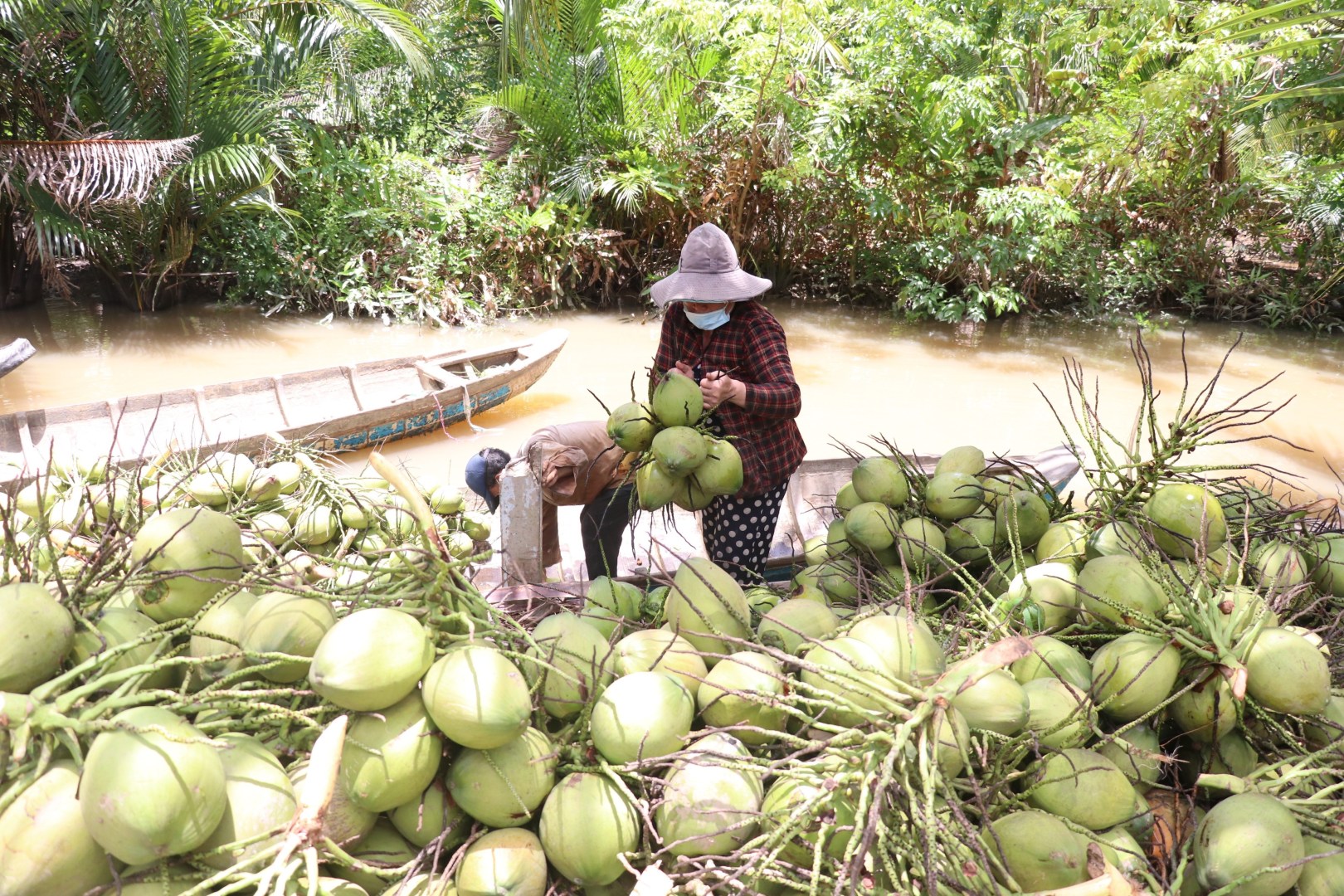Coconut trees are seen in many localities across Vietnam, mostly in the Mekong Delta and the central coast region. However, the coconut industry including the value chains from planting, purchasing, processing, consumption, and export, has long been developing spontaneously without specific, clear planning.
As consumer demand for coconut products increases and Vietnam sees more opportunities to export coconut, the issue then becomes how Vietnam develops its coconut industry effectively and sustainably.
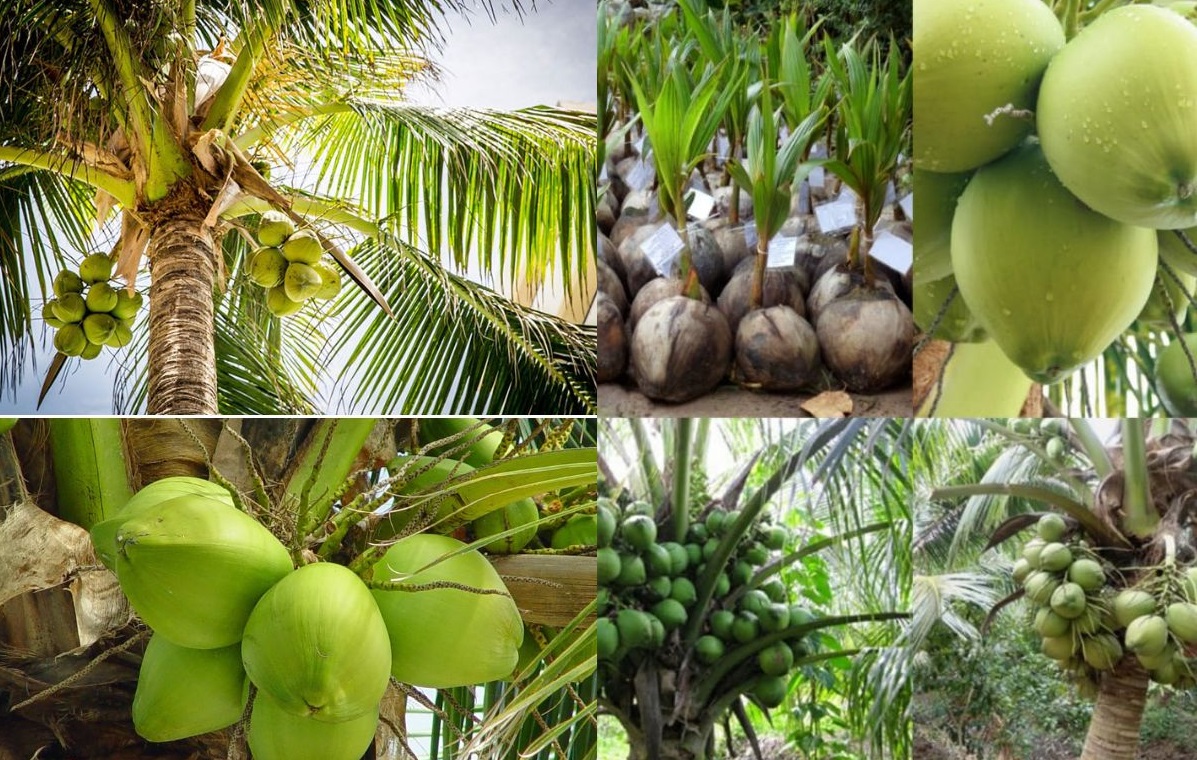
Much room for growth
Growing coconut trees as a source of supplementary income for farmers has become the main income source of nearly 390,000 Vietnamese farming households. From a drink or ingredient to making a few rustic dishes, Vietnamese coconuts are now exported to many countries and are one of the products that bring the country export revenue of at least one billion USD each year.
Nguyen Thi Kim Thanh, President of the Vietnam Coconut Association said that coconut is a multi-use, multi-value tree. Every part of the coconut tree from the fruit, stem, and leaves can be used. Besides coconut water and coconut meat that can be consumed directly, coconut can be processed to make many products such as coconut oil, coconut milk, cosmetics, and detergents. Meanwhile, coconut leaves, trunks and shells are raw materials to produce toys, fashion accessories, interior decorations, handicrafts, household appliances and many other products.
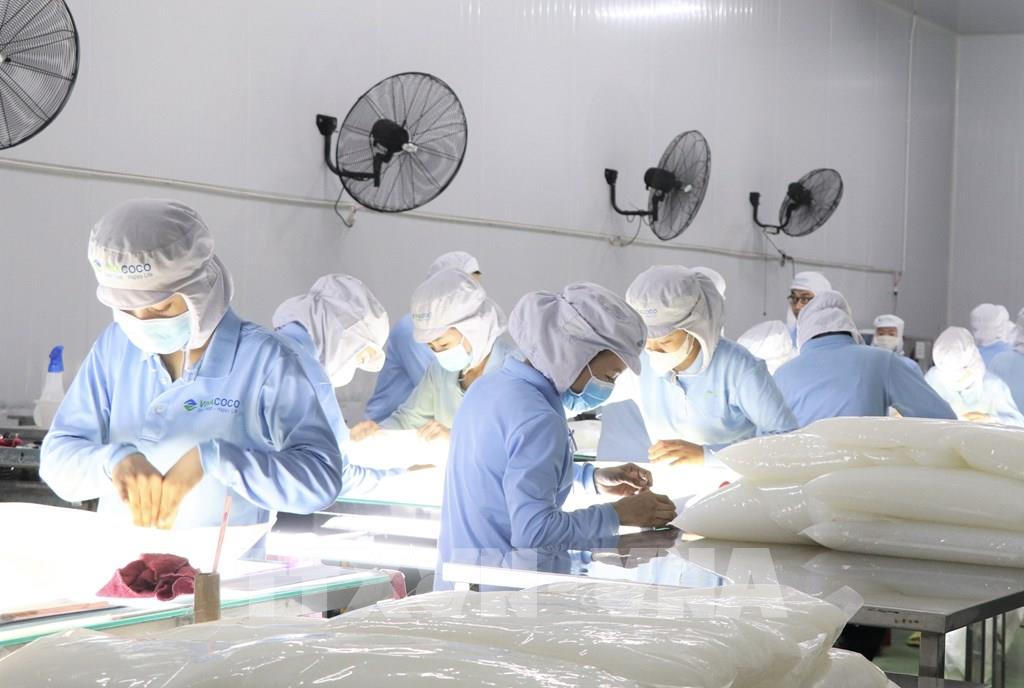
Along with direct economic value, coconut trees also contribute greatly to combating climate change as one hectare of coconut can filter 70-75 tonnes of CO2 each year. As Vietnam is committed to reducing greenhouse gas emissions to net zero by 2050 and Europe will start applying its Carbon Border Adjustment Mechanism (CBAM) in 2026, the economic value of coconut trees will continue to rise through the sale of carbon credits, Thanh said.
According to statistics from the Vietnam Coconut Association, the country now has about 200,000 ha of coconut cultivation, more than 88% of which is in the Mekong Delta region. Major coconut-growing provinces are Ben Tre, Tra Vinh, Tien Giang, Vinh Long, and Kien Giang. Moreover, many localities still have land funds, especially areas affected by saltwater intrusion, to expand their coconut growing areas.
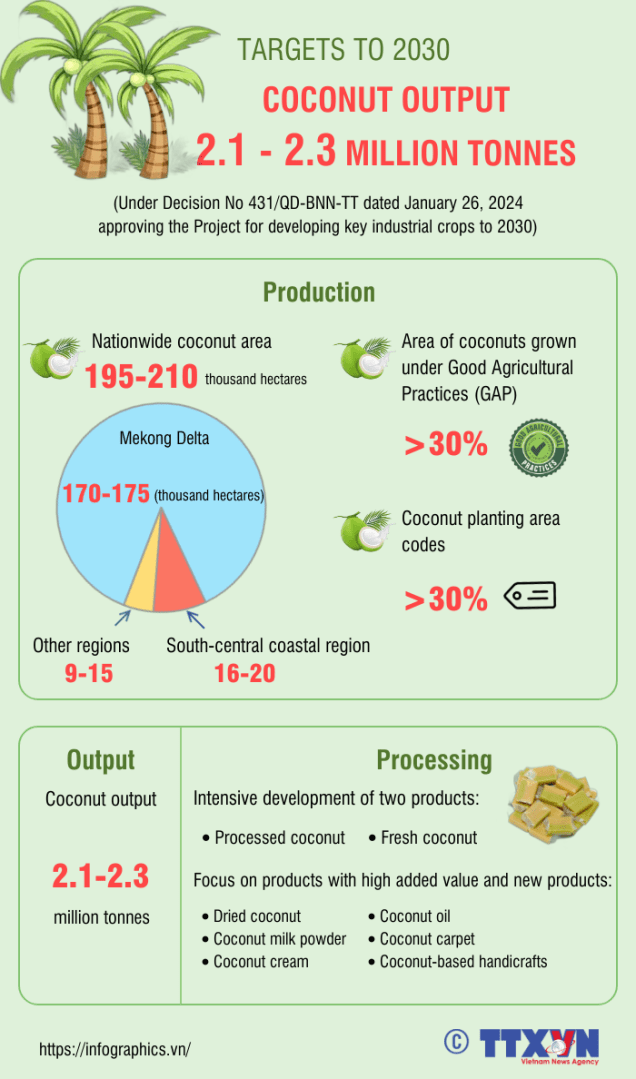
Cao Ba Dang Khoa, Vice President and General Secretary of the Vietnam Coconut Association: The export turnover of Vietnam’s coconut products is approaching the 1 billion USD mark and there is still a lot of potential for breakthroughs as Vietnam’s coconut industry sees much room for growth. Especially, in the new consumer trend, consumers around the world are more interested in vegetable fats and beauty cosmetics made from coconut.
Build value chain
The World Coconut Association predicts that by 2025, the industry can reach an average growth rate of 10% per year. Some products can post high growth rates, such as ice cream, water, oil and coconut jelly with a growth rate of 15 – 36%. Moreover, consumers now are willing to pay for clean products of plant origin.
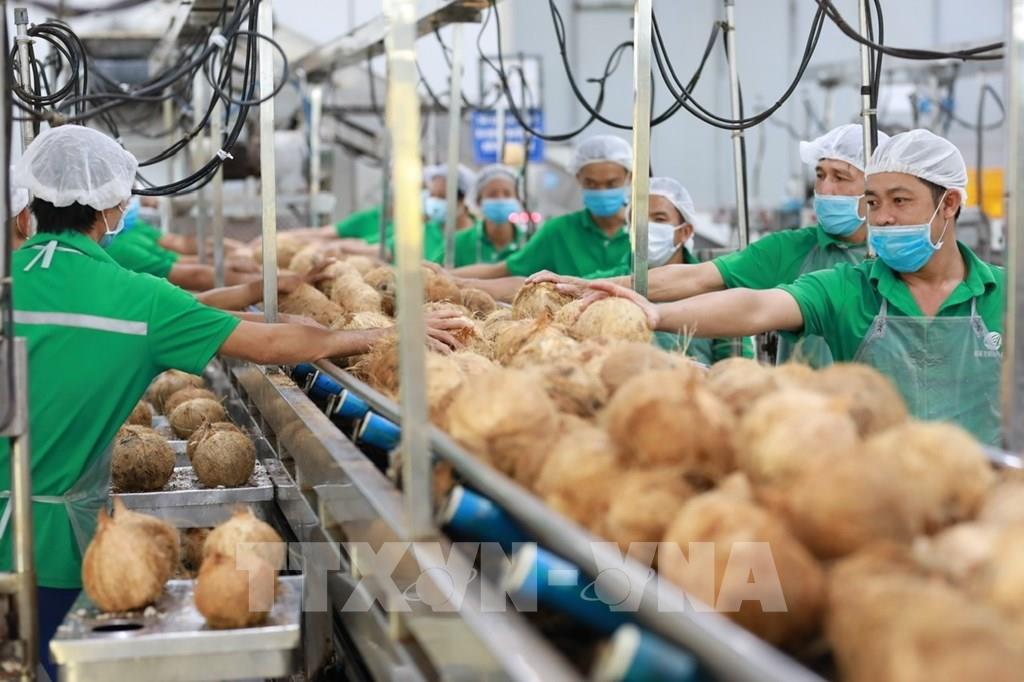
According to Khoa, Vietnamese fresh coconut was licensed to enter the US in August 2023. Vietnam is also negotiating with China to export fresh coconut to that market. Meanwhile, Vietnamese coconut products have been exported to the world’s leading demanding markets. Within the past five years, Vietnam’s coconut industry has risen to 4th position in the Asia-Pacific region.
Currently, the country has 90 enterprises exporting coconut products. Of that 42 enterprises export deeply processed Made-in-Vietnam products. Coconut businesses not only produce coconut products but also supply raw materials for the production of more than 200 coconut-relating products in the food, medical, and cosmetics industries. In particular, coconut trunks have great potential to produce high-value wood products for the furniture and handicraft industries.
Thanks to deep processing, the value of coconuts has increased many times, helping to stabilise the lives of coconut growers, creating jobs, contributing to stabilising the rural ecosystem, and combating climate change.
Tran Que Trang, General Director of Ben Tre Import-Export Joint Stock Company (Betrimex), said that Vietnam has the natural conditions to develop specialised coconut growing areas. The coconut processing industry is also shaped by factories with modern technology and investment in research and development of value-added products. With an effective approach, the Vietnamese coconut industry will go further.

As the Ministry of Agriculture and Rural Development recognised coconut as a key industrial crop, many businesses expect the coconut industry will receive further attention and support from state management agencies, especially in developing strategies and planning for stable and sustainable raw material areas.
In addition, localities need to actively invest in transportation and logistics infrastructure to help facilitate the purchase and transportation of coconuts in particular and agricultural products in general. Thus, businesses will feel secure in investing in processing factories, expanding the value chain, improving economic efficiency for coconut growers, increasing export turnover and building a brand for Vietnamese coconut products./.
